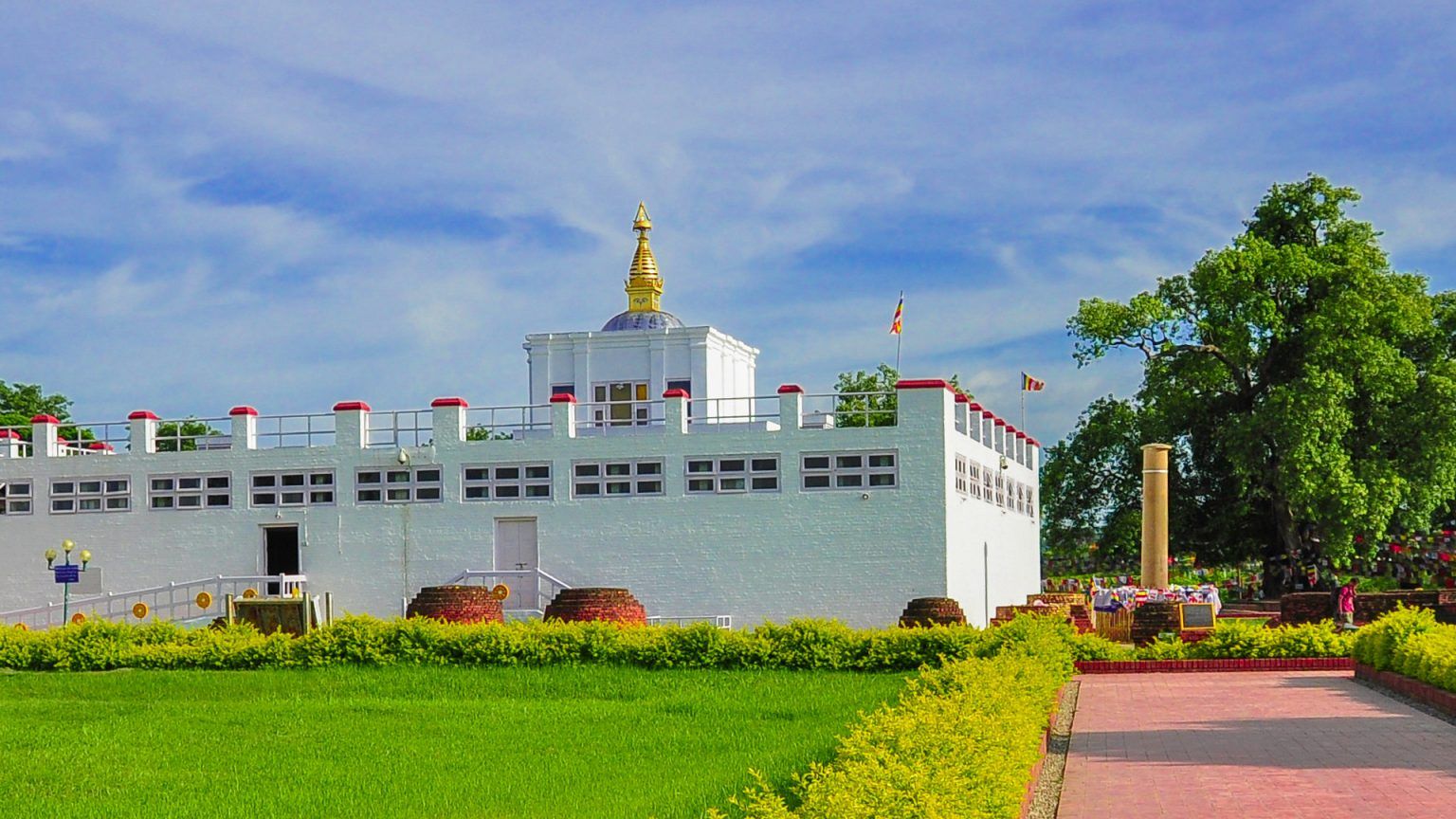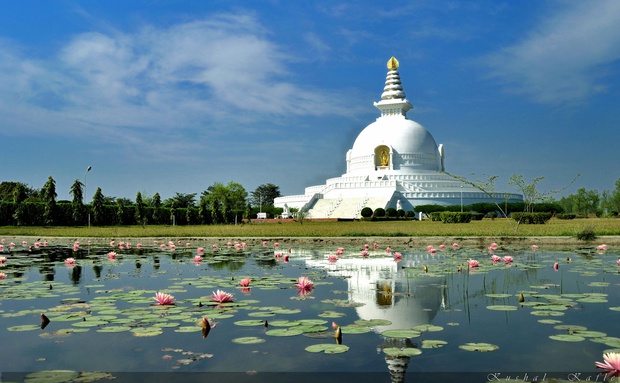The significance of Lumbini is greater for the Buddhist community. Gautam Buddha was born in this city. When Lord Buddha was born, this location was referred to as Kapilvastu. Lord Buddha made the decision to abandon his life of luxury and seek enlightenment in Lumbini. Every year, Buddhists from all over the world visit this location.
It is easy to get to Lumbini. The Bhairahawa airport is the one that is closest to this town. To access this airport, you must board a flight from Kathmandu's Tribhuvan airport. You can go by car to get there if you want to save money. 265 kilometres separate Lumbini from Kathmandu. Hence, the travel time by bus would be around seven and a half hours. You will get to finish your trip well under budget, despite the fact that the excursion may make you feel exhausted.
5:00 am- 6:00 am (Waking up and the morning routine)
Wake up! It’s the day to explore Lumbini. After getting off your bed, you can freshen up. You can take a bath and get ready for some sightseeing as Lumbini has a lot to offer.
6:00 am- 7:00 am (Breakfast and commute)
It’s time for breakfast. In a local eatery, you might want to sip some tea with some omelette, roti, tarkari (spicy vegetables) and choila. Of course, it is up to you but we’re just describing what Nepalese generally eat for breakfast. Have a light breakfast so that you don’t have to go to the toilet frequently during the day.
After breakfast, you can travel to the Lumbini Development Zone. It takes around 15 mins of commute to reach there if you had stayed in a nearby hotel. You can even stay in one of their Vihars (places for guests to stay) in one of Lumbini’s monasteries.

7:00 am- 8:00 am (Maya Devi Temple, Bodhi Tree and Ashok Pillar)
The main attraction in the Lumbini region is the Maya Devi temple. This temple is a structure that guards the precise location of Lord Buddha's alleged birthplace. Together with the Marker Stone, it has several bricks and buildings that date back to the time of Buddha's birth.

Queen Maya Devi rested under the Bodhi Tree, which is close to the temple, when she was on the road. Together with the temple, there is a pond where some say Buddha took his first bath.

The Indian emperor Ashoka constructed the Pillar in 249 BC, and it is located just next to the Maya Devi Temple. It also goes by the name Ashoka Pillar. An inscription on this pillar explains the significance of Lumbini as the location of Lord Buddha's birth. This pillar is incredibly significant historically because it demonstrates that Buddha was indeed born in Lumbini rather than in India.
8:00 am- 8:30 am (Lumbini Museum)
A museum in the Lumbini area that is a landmark in and of itself is located apart from all the magnificent monasteries. This museum features several images and artefacts from Buddhist locations around the world and is devoted to the life of Lord Buddha. This is the location you must not miss if you're in Lumbini and want to learn more about Buddhism and Lord Buddha.

8:30 am- 9:00 am (The Eternal Flame)
The Eternal Peace Flame, also known as Shanti Deep, is another significant attraction of the Lumbini region. This flame never stops burning and it never will. Many people travel to Lumbini to view this perpetually burning peace flame.
9:00 am- 9:30 am (The Nativity Sculpture)
The image of Maya Devi, also known as the Nativity sculpture, dates to the fourth century AD and shows her grasping a branch of a tree in her right hand as a crutch. Siddhartha, the recently born king, is being welcomed by two celestial beings while standing straight on a podium made of a lotus.
9:30 am- 10:00 am (Royal Thai Buddhist Museum)
An impressive and beautiful wat-style (Thai Monastery style) monastery dedicated to Buddhist practices can be found in Lumbini called Royal Thai Monastery. The shining structure is made of white marble, and the nearby meditation centre with a blue roof is an illustration of its exquisite architecture.
10:00 am- 10:30 am (Sri Lankan Monastery)
The monastery, also known as Sri Lanka Temple, is a stunning Sri Lankan Buddhist establishment that sheds light on Gautama Buddha's life and its significance in the area. Numerous significant religious rituals and activities, particularly those practised in Sri Lanka, are held at the magnificent monastery. It offers a glimpse into the life of Gautama Buddha.
10:30 am- 11:00 am (Cambodian Monastery)
One of the most intriguing temples in the area is the Cambodian Monastery in Lumbini. The monastery, whose construction echoes that of Angkor Wat, is ringed by four 50-metre-long green snakes on either side of a square barrier. The vast compound's exterior wall is decorated with elaborate patterns.
11:00 am- 11:30 am (Myanmar Golden Temple)
The oldest building in Lumbini is the Myanmar Golden Temple. The temple, which was constructed in the Burmese style of architecture, honours Lord Buddha. The striking shikhara, modelled after the temples of Bagan, is formed like a corncob and lends the entire building a regal appearance.
11:30 am- 12:00 pm (China Temple)
One of the elegant Buddhist Monasteries in Lumbini is Zhong Hua Chinese Buddhist Monastery, also known as the China Temple. The spectacular building is designed in the pagoda style, and it has an appearance reminiscent of China's fabled forbidden city.
12:00 pm- 12:30 pm (Korean Temple)
Buddhist Monastery Dae Sung Shakya Sa, sometimes referred to as the Korean Temple, is located in Lumbini. The beautiful building features colourful ceiling murals and was constructed in the Korean architectural style. For a little fee of NRs. 500 per day, it even provides visitors with a communal sleeping room and three meals each day.
12:30 pm- 1:00 pm (Manang Samaj Stupa)
The Manang Samaj Stupa, a chorten built by Buddhists from Manang of northern Nepal, is one of the country's oldest stupas and dates back to the birth of Gautam Buddha in 600 BC. This structure has a golden Buddha statue in the centre, which is encircled by vibrant murals.
1:00 pm- 2:00 pm (Commute)
To experience more of Lumbini, you will need to commute to the heart of the city. Many attractions await you there. You can even have your lunch in one of the restaurants or eateries along the way.
2:00 pm- 2:30 pm (Dharma Swami Maharaja Buddha Vihar)
The Sakyapa order's Buddhist Gompa is called Dharma Swami Maharaja Buddha Vihar. His Eminence Chogya Trichen Rinpoche founded it. The location is ideal for meditation and quiet introspection due to its enormous serenity and tranquillity. The 600 monks who live in the monastery carry out the worship of Taras daily.
2:30 pm- 3:00 pm (Vietnam Phat Quoc Tu Temple)
One of the few tourist destinations that depicts the bond between Vietnam and Nepal is the Vietnam Phat Quoc Tu Temple, which is located in Lumbini. A large number of individuals make the journey to this Buddhist temple. It has a grand roof and a facade bordered by artificial mountains.
3:00 pm- 3:30 pm (Great Drigung Lotus Stupa)
The German Tara Foundation constructed the Great Drigung Lotus Stupa, one of Lumbini's most revered religious structures. Buddhist artwork decorate the Stupa's dome-shaped ceiling. The Buddha's ideas and teachings, which promote nonviolence and peace, are represented through the gold and wood carvings.
3:30 pm- 4:00 pm (Thrangu Vajra Vidya Monastery)
The Lumbini monastery known as Thrangu Vajra Vidya Monastery is dedicated to Thrangu Rinpoche. He adhered to the Buddha's teachings and based his ideals on wisdom, oneness, and peace. Thrangu Rinpoche began founding schools for Buddhist learning for those who are of very young and this monastery supports his mission.

4:00 pm- 4:30 pm (World Peace Pagoda)
Just beyond the core area, the Japanese constructed this pagoda for a million US dollars. The statue of Lord Buddha in the pagoda is in the position that he was in at the time of his birth. It has a magnificent statue and is a shimmering white building.
4:30 pm- 5:00 pm (Commute)
The next destination that you are heading to is Tilaurakot. It is located 24 km from the centre of Lumbini.
5:00 pm- 6:00 pm (Tilaurakot)
It is thought that Lord Gautama Buddha lived there for 29 years as Tilaurakot is home to the remnants of Kapilvastu. He had renounced his life as a prince to attain nirvana. This discovery is noted as a noteworthy occasion that sheds light on the historical life of Gautama Buddha. It is said to be the location of the Shakyas' historic metropolis. The foundations of a building that resembles a residential complex are among the visible remains. Several of the items discovered during the excavation are on display in a nearby museum.
6:00 pm- 7:00 pm (Dinner)
You can enjoy the view of a beautiful sunset from Lumbini. You will find many places offering you a variety of dishes. Instead of a classy restaurant, you might want to try some local cuisines at local eateries. They are not that bad.
7:00 pm- 9:00 pm (Time with the Locals)
Mingling with the locals is a must. They give you the authentic Nepali experience. The locals are very friendly and welcoming. You will get to make new friends.
9:00 pm- 10:00 pm (Time for Bed)
You have travelled a lot today. There are more adventures waiting for you tomorrow. It’s time for bed!
Photo Credits: www.nepal-travel-guide.com, www.visitnepalweb.com, www.boa-overland.com, www.lumbinidevtrust.gov.np, www.buddhapalacelumbini.com.np.
Also Read: